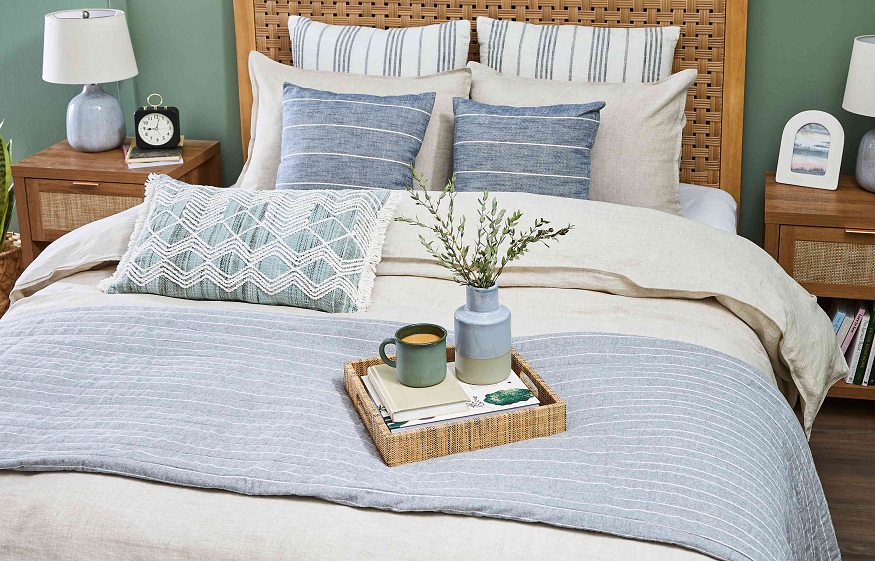It’s the time when our bodies repair and recharge, and without it, we can feel tired, irritable, and even suffer from health problems. But did you know that the design of your bedroom can have a significant impact on the quality of your sleep?
There are several factors that can affect sleep quality, including temperature, noise, and even the color of your walls. By optimizing your bedroom design, you can create a peaceful and relaxing environment that promotes restful sleep.
In this article, we’ll explore the importance of a good night’s sleep and delve into the factors that can affect sleep quality. We’ll also discuss how bedroom design can impact sleep and provide tips on choosing the right bedding material and lighting to create the ideal sleep environment. So, if you’re looking to improve your sleep quality, read on to discover how bedroom design can help.
Importance Of A Good Night’s Sleep
Lack of sleep can lead to fatigue, decreased concentration, and impaired judgment, which can affect daily activities such as work or school performance. Designing your bedroom for optimal rest is crucial in achieving quality sleep.
Visual clutter in the bedroom can generate stress and reinforce anxious feelings. A tidy and organized sleep space significantly improves the sleep routine by providing a calm environment that promotes relaxation. It’s important to reduce outside noise that may disrupt our rest. Using white noise machines could help block out loud noises for a more peaceful sleeping zone.
Experts suggest keeping the temperature between 60 to 72 degrees Fahrenheit in your bedroom for enhanced sleep quality since cooling off the bedroom temperature allows our body temperature to drop, improving our ability to fall asleep faster and stay asleep longer. Bedrooms should only have two purposes: sleeping and sex so that we associate them with these activities only.
Factors That Affect Sleep Quality
One of the most important factors that affect sleep quality is the bedroom environment. A cluttered and disorganized bedroom can increase stress levels and inhibit relaxation, making it difficult to fall asleep and stay asleep. To promote better sleep, it’s important to maximize the layout of your bedroom, keep things tidy, and reduce clutter.
The colors used in a bedroom can also affect sleep quality. Cool, calming tones such as blue or green are known to promote relaxation and tranquility. In addition to colors, maintaining a cooler temperature (between 60-72 degrees Fahrenheit) can improve sleep quality by helping your body regulate its temperature throughout the night.
To further promote healthy sleep habits, consider reserving your bedroom solely for sleeping and intimacy. This helps create a mental association between the bedroom space and restful activities. Keeping a notebook of inspirations for future design changes can help keep you motivated to maintain a comfortable and relaxing environment.
Finally, maintaining cleanliness in your bedroom is essential for reducing irritants that can interfere with sleep quality. Vacuuming carpets frequently and washing bedding regularly (at least once every two weeks) can reduce dust mites that may irritate allergies or cause congestion.
By optimizing your bedroom environment with these tips, you’ll be on your way to enjoying better-quality sleep each night.
How Bedroom Design Can Impact Sleep
Studies have shown that creating an environment in your bedroom that promotes restful sleep is vital for improving your quality of sleep. This includes optimizing factors like light and noise levels, temperature and comfort. A bedroom space that encourages better sleep can also help improve how you feel during waking hours.
To start, it’s important to ensure an optimal sleeping temperature ranging between 60 to 72 degrees Fahrenheit. The right bedding is also crucial for a comfortable night’s rest. Your sheets should be soft, breathable, and feel good against your skin. As for colors of the room itself walls painted in light or muted tones like cool blues or soft greens can create a more calming atmosphere.
Design issues such as noise pollution should also be addressed by earplugs or white noise devices if needed. Finally, establishing relaxation activities before bedtime can include stretching exercises, meditations apps which will prepare you for the optimal transition into resting mode.
While designing a perfect bedroom may take some effort initially – once it has been done with great care it will deliver long term dividends in improving on the amount and quality of sleep an individual gets each night.. So take time to design your space with features optimize both ZZZ’s and waking vitality!
Choosing The Right Bedding Material
When it comes to getting a good night’s sleep, investing in high-quality bedding is important. The material that your bedding is made from can affect your comfort level and even your health. Cotton is a popular choice for bed sheets due to its ability to allow airflow and wick moisture away from the body. Organic cotton is an even better option as it reduces exposure to harmful pesticides.
For those looking for soft and absorbent towels, consider microfiber terry toweling. It’s a great alternative to traditional cotton towels because of its quick-drying properties. Quality linens, pillows, and rugs can provide additional tactile comfort when added to the bedroom.
It’s essential to choose the right material based on individual needs and preferences. Nylon should be avoided as it doesn’t breathe well and is not suitable for bedding. Smooth, breathable fabrics like cotton, satin, silk or rayon are recommended for sleepwear instead.
Lastly, regularly washing bedding can reduce allergen levels in the bedroom which may contribute to better sleep quality overall.
By taking these factors into account when choosing bedding materials you’ll be able to create a comfortable sleep environment that promotes restful nights of slumber!
Lighting And Its Effects On Sleep
Lighting plays a significant role in regulating the body’s internal clock that signals when to be alert and when to rest. As such, it can make a room suitable for reading, relaxing, and sleeping. The right type of lighting can create a bedroom environment that is conducive for falling asleep and staying asleep- key factors in achieving quality rest.
To set the right mood before bedtime, keep bedroom lighting warm and dim. This will help you relax and wind down after a busy day. Plants may also help create better air quality for improved sleep. When choosing a light bulb, go for one with reduced blue light emission as this spectrum triggers our brains to stay awake longer by suppressing melatonin production.
Additionally, an optimal temperature range of 60 to 71.6 degrees Fahrenheit (15.6 to 22.0 degrees Celsius) should be suitable for most sleepers since extreme temperatures above or below this range can disrupt your sleep cycle.
Overall, lighting is one of the most important external factors affecting your sleep quality; hence it should not be overlooked when designing your bedroom space. By following these simple tips on how lighting affects your sleep cycle, you can build a peaceful sanctuary that promotes deep slumber!




